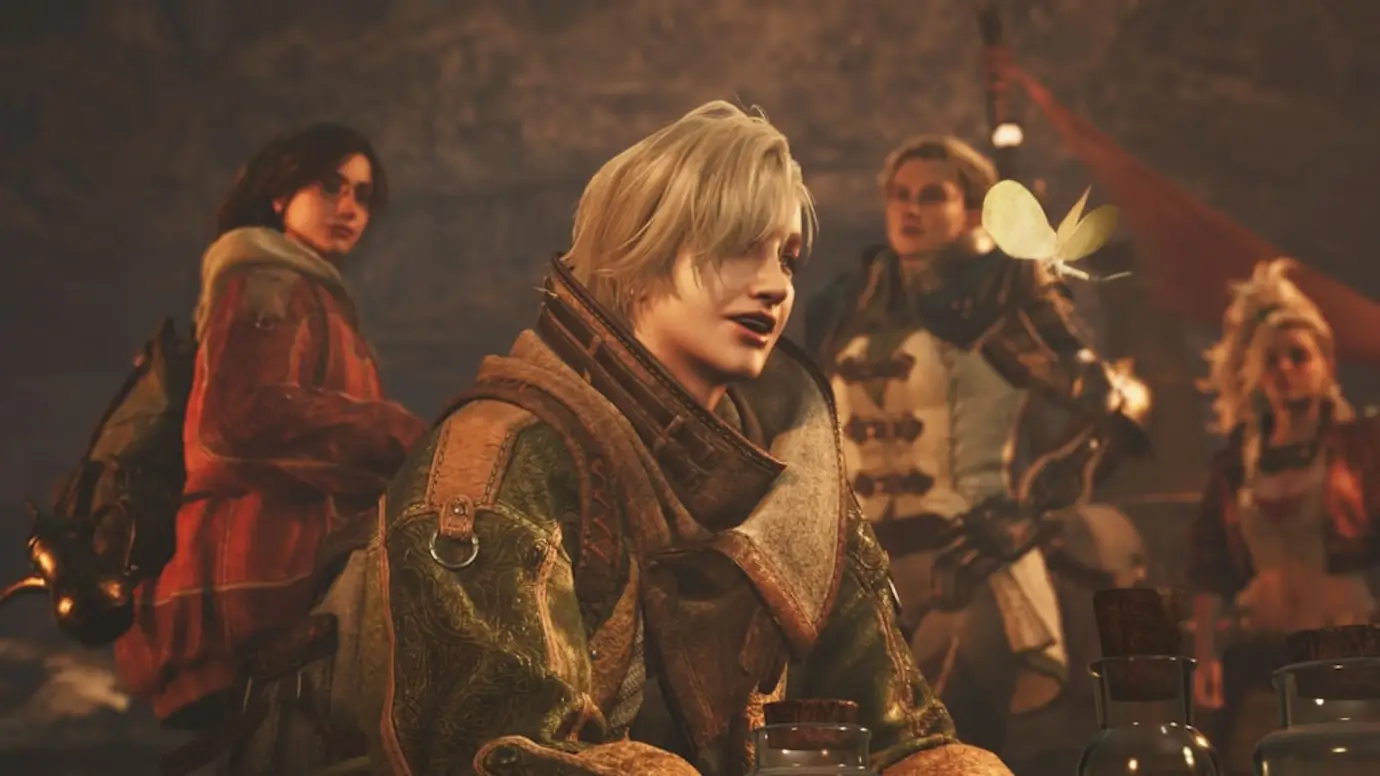Monster Hunter: Wilds, a highly anticipated installment in Capcom’s venerable action RPG series, enjoyed immense popularity at launch, significantly contributing to another year of financial growth for Capcom.
The game quickly achieved impressive sales figures, showcasing the enduring appeal of the Monster Hunter franchise. However, this initial success for the PC version was unfortunately overshadowed by persistent and severe performance issues that plagued players from day one.
These technical shortcomings led to a wave of frustration within the community, culminating in the game receiving an “overwhelmingly negative” rating on Steam. Players reported a myriad of problems, including high CPU loads, erratic frame rates, frequent crashes, and perplexing visual bugs. These issues were reportedly exacerbated by an update released approximately a month ago, further diminishing the player experience and contributing to a significant drop in concurrent player numbers.
Thankfully, a turning point has arrived for PC players. Capcom has now released Title Update 2, a crucial patch specifically designed to address these long-standing performance woes. This update aims to rectify the core technical problems that have been hindering the enjoyment of “Wilds” on PC, offering a much-needed lifeline to the community. Alongside these critical performance fixes, the update also brings exciting new content, including the addition of two “fan favourite” monsters, promising a revitalized hunting experience for returning players. This comprehensive update signals a renewed commitment from Capcom to the PC platform, aiming to restore “Wilds” to its full potential and reclaim the positive reception it initially received on other platforms.
The Root Cause: Shader Compilation and VRAM
The most significant technical hurdle for Monster Hunter: Wilds on PC has been identified and, thankfully, addressed by Capcom in Title Update 2. The core problem stemmed from an inefficient system for handling shader compilation and VRAM usage, leading to a cascade of performance instabilities.
Unpacking the Shader Compilation Problem
At the heart of the PC performance woes for Monster Hunter: Wilds was a fundamental flaw in its shader compilation process. Shaders are small programs that tell your graphics card how to render objects, lighting, and effects in a game. Ideally, these shaders are compiled and optimized before gameplay begins. However, “Wilds” suffered from a system where shader compilation occurred during gameplay. This meant that as players encountered new environments, monsters, or visual effects, the game would attempt to compile the necessary shaders on the fly. This real-time compilation process put an “inexcusable” strain on the CPU, leading to sudden and significant performance drops.
This on-the-fly compilation manifested as “high CPU loads”, causing stuttering, frame rate inconsistencies, and an overall choppy gaming experience, even on high-end systems that should have easily handled the game. Furthermore, players were often forced to manually delete their shader cache files in an attempt to alleviate these issues, a cumbersome and temporary workaround that highlighted the severity of the problem. If not deleted, these files could become corrupted or inefficient, exacerbating the performance struggles.
Title Update 2 fundamentally alters this process. Now, “shader compilation occurs upon the game’s initial launch”. While this means players will experience a longer loading time when first starting the game or after a major update, it ensures that all necessary shaders are pre-compiled. This eliminates the performance hitches during gameplay, providing a smoother, more stable, and ultimately more enjoyable hunting experience without the need for manual file deletion.
Addressing VRAM Usage and Crashes
Beyond the CPU-intensive shader compilation, Monster Hunter: Wilds on PC also struggled with inefficient Video RAM (VRAM) usage. VRAM is the dedicated memory on a graphics card used to store textures and other visual data. When a game uses VRAM inefficiently, it can lead to performance bottlenecks, especially on GPUs with limited memory, and can also contribute to system instability and crashes. The game’s problematic VRAM management meant that it often requested more VRAM than necessary or managed it poorly, leading to slowdowns and, in many cases, “increased rate of crashes and visual bugs”. This issue was particularly noticeable and seemed to worsen with a previous update, causing further frustration for the player base.
Title Update 2 directly tackles these VRAM concerns. Capcom has “adjusted the amount of VRAM used with texture streaming”, resulting in a “reduced overall VRAM usage.” This optimization is crucial for improving stability and frame rates across a wider range of PC hardware. Furthermore, the update also fixes an issue where the game’s “Estimated VRAM Usage” display in the graphics settings showed incorrect values, providing players with more accurate information.
While the estimated usage might now appear higher in the settings, the actual VRAM consumption by the game has been optimized and reduced, meaning current minimum and recommended system requirements remain unchanged. These VRAM optimizations, combined with the pre-game shader compilation, aim to deliver a significantly more stable and consistent performance, minimizing crashes and eliminating visual glitches that have plagued PC players since launch. The goal is to ensure a fluid and immersive hunting experience, allowing players to focus on the thrill of the hunt rather than technical frustrations.
Community Reaction and Game Revival
The widespread performance issues significantly impacted the perception of Monster Hunter: Wilds among PC players, leading to a substantial backlash. However, with the release of Title Update 2, there is a renewed sense of optimism and a surge of returning players.
The “Overwhelmingly Negative” Steam Rating
The technical woes of Monster Hunter: Wilds on PC had a devastating impact on its public perception, particularly evident in its Steam review status. The game, which had suffered from “performance issues from day one on PC,” saw its user reviews plummet. Before Title Update 2, the game held an “overwhelmingly negative” rating based on its recent reviews, a stark contrast to its initial critical acclaim and strong console performance. This overwhelmingly negative sentiment reflected the deep frustration of PC players who encountered “an increased rate of crashes and visual bugs” as of a previous update approximately a month ago.
Thousands of negative reviews flooded the game’s Steam page, with players citing frequent crashes, persistent stuttering, high CPU usage, and general lack of optimization across a wide range of hardware configurations, including those exceeding recommended system requirements. Some players even claimed that the game’s technical state had worsened over time, further fueling the backlash.
This negative feedback directly impacted the game’s player count, which saw a significant decline of over 98% from its peak shortly after launch. The “review-bombing” campaign served as a powerful collective voice from the PC community, urging Capcom to address the fundamental technical problems that were preventing them from enjoying the game. The “Overwhelmingly Negative” rating became a highly visible symbol of the PC version’s struggles, deterring new players and highlighting the urgent need for a comprehensive fix.
A Surge of Returning Hunters
With the release of Title Update 2, there’s a palpable sense of relief and optimism within the Monster Hunter: Wilds community. The promise of genuine performance fixes, particularly the resolution of the shader compilation and VRAM issues, has encouraged a significant number of players to return to the game. As of writing, there has been a “surge of returning players” who have “hopped back into the game.” This immediate positive response is a testament to how deeply the performance problems affected the player base and how eager they were for a stable and smooth experience. The community’s sentiment has shifted, with many expressing cautious optimism that “the dark times for Wilds are a thing of the past.”
This resurgence in player activity on Steam is a crucial indicator that the update is having its intended effect. A better-performing game leads to more enjoyable sessions, which in turn can lead to more positive reviews and recommendations. While the long-term impact remains to be seen, this initial wave of returning hunters suggests that Capcom has taken a significant step towards rehabilitating the game’s reputation on PC. A stable and optimized game is essential for long-term engagement and the success of future content updates. The developer’s responsiveness to player feedback, even if delayed, is often a key factor in rebuilding trust and fostering a loyal community. This renewed interest sets the stage for “Wilds” to potentially reclaim its place as a beloved entry in the Monster Hunter series for PC players.
New Content: Expanding the Hunt
Beyond crucial performance optimizations, Title Update 2 also brings exciting new gameplay content, enriching the hunting experience and further incentivizing players to dive back into Monster Hunter: Wilds.
Introducing Fan-Favorite Monsters
In addition to the much-needed performance overhauls, Title Update 2 introduces fresh content designed to entice players back into the hunt. The update brings two “fan favourite” monsters to the game, significantly expanding the roster of formidable creatures players can track and battle. These additions are Lagiacrus, the iconic Leviathan from Monster Hunter Tri, and Seregios, a nimble and aggressive Flying Wyvern introduced in Monster Hunter 4 Ultimate. The return of these beloved monsters provides both a nostalgic draw for long-time series veterans and exciting new challenges for players new to their mechanics.
Lagiacrus is particularly notable for its unique design and its association with underwater combat in past titles, though it remains to be seen how its aquatic abilities will translate into “Wilds”‘ more expansive terrestrial environments. Seregios, known for its razor-sharp scales and bleeding attacks, promises fast-paced and demanding encounters. These new monsters are typically introduced through “extra missions” that players must unlock by reaching a certain Hunter Rank and completing specific main or side quests.
The inclusion of “Tempered” versions of these monsters for higher Hunter Ranks (HR 41+) further extends the endgame content, providing even greater challenges and opportunities for rare material acquisition. The introduction of these highly anticipated monsters represents a significant content injection that goes hand-in-hand with the performance improvements, aiming to give players compelling reasons to engage with the game more deeply.
Beyond Monsters: Difficulty and Collaborations
Title Update 2 is not the sole source of new content for Monster Hunter: Wilds. Capcom has been maintaining a steady cadence of updates since launch, offering various additions and enhancements to keep the hunting experience fresh. Prior to this major patch, “a few months of steady smaller updates” have already introduced “higher difficulty hunts,” catering to seasoned players looking for greater challenges and more rewarding encounters. These often involve “Tempered” or “Arch-Tempered” versions of existing monsters, or special event quests that test a hunter’s skill and build optimization.
Furthermore, Capcom has embraced unique cross-over collaborations, bringing unexpected elements into the world of “Wilds.” One notable example is the inclusion of “Akuma from Street Fighter 6 of all things.” Such collaborations, which are a hallmark of the Monster Hunter series, typically introduce unique equipment, layered armor, and cosmetic items inspired by the guest characters, often tied to special event quests.
These smaller, consistent updates, coupled with major content drops like Title Update 2, demonstrate Capcom’s long-term support for “Wilds.” They ensure that even if players momentarily stepped away due to performance issues, there’s a continuous stream of new challenges, unique rewards, and unexpected surprises waiting to draw them back into the vibrant ecosystem. This ongoing content strategy is crucial for maintaining player engagement and extending the game’s longevity, transforming it from a mere purchase into a live service experience.
Brighter Future for Wilds on PC
The release of Title Update 2 for Monster Hunter: Wilds marks a pivotal moment for the game’s PC version. What began as a commercially successful but technically troubled launch, plagued by “inexcusable performance woes” stemming from inefficient shader compilation and VRAM management, now appears to be on a clear path to redemption.
The patch’s direct approach to pre-compiling shaders at launch and optimizing VRAM usage should resolve the core issues that led to “high CPU loads”, stuttering, crashes, and an “overwhelmingly negative rating on Steam.” This crucial technical overhaul promises to deliver the smooth, stable, and immersive hunting experience that PC players have long deserved and expected from a flagship Capcom title.
Beyond fixing fundamental problems, Title Update 2 also enriches the game with substantial new content, including the eagerly anticipated return of “fan favourite” monsters like Lagiacrus and Seregios, alongside continued support through smaller difficulty updates and unique collaborations. This dual focus on technical improvement and content expansion is already yielding positive results, with a “surge of returning players” indicating renewed faith in the game.
Having already proven to be a financial success for Capcom, “Monster Hunter: Wilds” on PC now has the opportunity to overcome its initial stumble. With these critical fixes in place, the “dark times” for the game’s PC performance can hopefully become a distant memory, allowing players to fully immerse themselves in the challenging and rewarding world of monster hunting.







